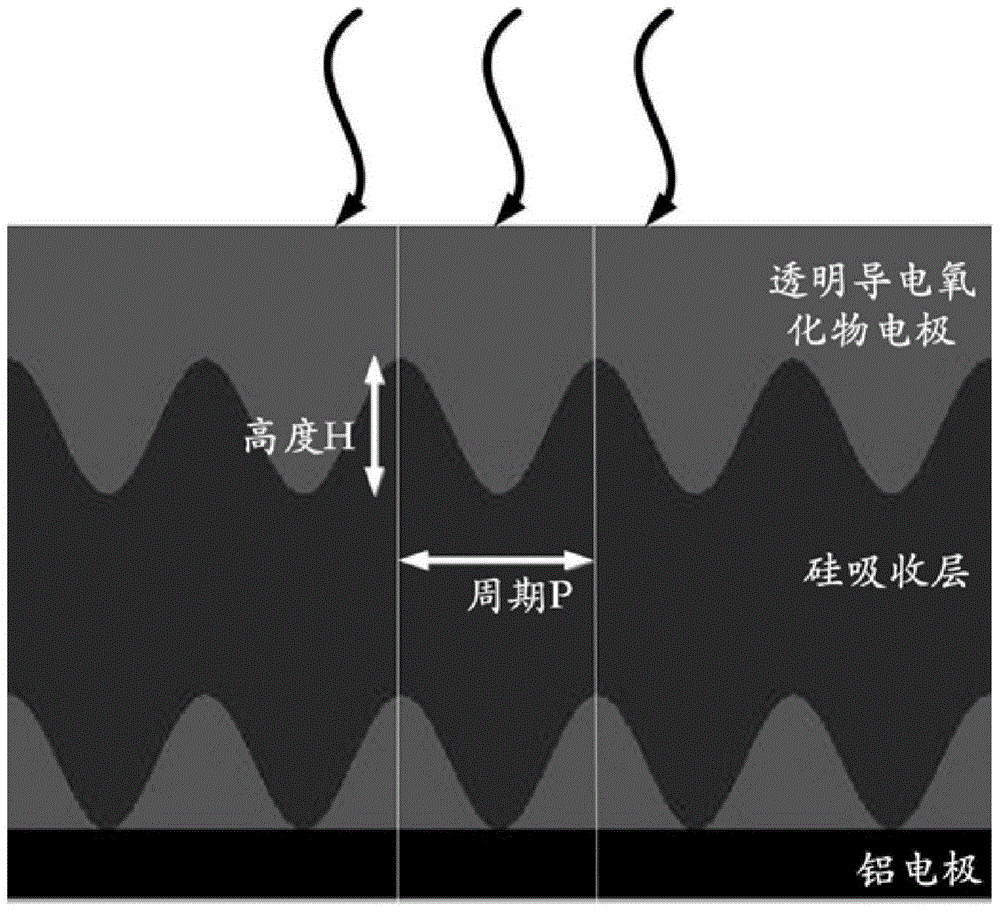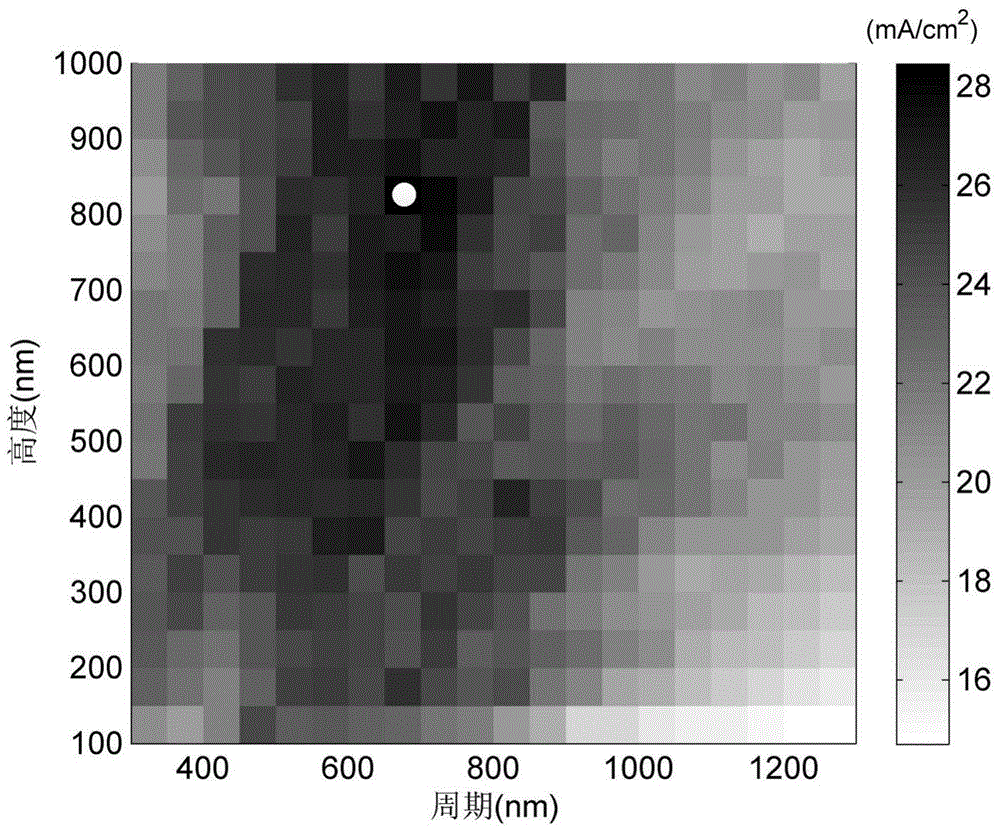Two-dimensional cosine wave surface light-trapping structure and solar thin film battery based on this structure
A technology of solar cells and light trapping structures, applied in photovoltaic power generation, circuits, electrical components, etc., can solve the problems of disordered structure, area limitation, inability to prepare nanostructures, etc., and achieve good angle sensitivity, strong coupling characteristics, The effect of large forming area
- Summary
- Abstract
- Description
- Claims
- Application Information
AI Technical Summary
Problems solved by technology
Method used
Image
Examples
preparation example Construction
[0022] The method for preparing a silicon-based thin-film solar cell in the present invention includes the following steps: depositing a transparent conductive oxide on the metal electrode substrate, using interference photolithography to make a cosine wave light trapping structure, and then sequentially depositing and doping to make a silicon absorber Layer PN junction, and then use interference lithography to make a cosine waveform light trapping structure, and finally deposit a transparent conductive oxide.
[0023] The absorption enhancement effect of the periodic two-dimensional cosine wave surface light trapping structure can be based on the short-circuit current density at normal incidence J sc To evaluate, its expression is as follows:
[0024]
[0025] Where q is the amount of charge, λ is the wavelength of incident light, h is Planck's constant, c is the speed of light, I AM1.5G (λ) is the AM1.5G solar spectrum radiation, and A(λ) is the absorption spectrum of the batte...
Embodiment 1
[0027] We give the battery structure (see figure 1 with figure 2 The thickness of the silicon absorption layer of) is 1000nm. Because the two-dimensional light trapping structure of different periods and heights has different effects on the absorption enhancement, the period P varies from 300nm to 1300nm and the height H varies from 100nm at normal incidence. The short-circuit current density corresponding to different light trap structures up to 1000nm J sc (P, H) to optimize the period and height of the periodic two-dimensional light trapping structure.
[0028] Through this optimization method, the two-dimensional cosine waveform surface light trapping structure is optimized, such as image 3 As shown, the period and height of the best two-dimensional cosine wave surface trapping structure are 650nm and 800nm respectively (see image 3 The white point in the middle), the corresponding short-circuit current density is 28.46mA / cm 2 . In the same way, an optimal inverted pyram...
PUM
 Login to View More
Login to View More Abstract
Description
Claims
Application Information
 Login to View More
Login to View More - R&D
- Intellectual Property
- Life Sciences
- Materials
- Tech Scout
- Unparalleled Data Quality
- Higher Quality Content
- 60% Fewer Hallucinations
Browse by: Latest US Patents, China's latest patents, Technical Efficacy Thesaurus, Application Domain, Technology Topic, Popular Technical Reports.
© 2025 PatSnap. All rights reserved.Legal|Privacy policy|Modern Slavery Act Transparency Statement|Sitemap|About US| Contact US: help@patsnap.com



